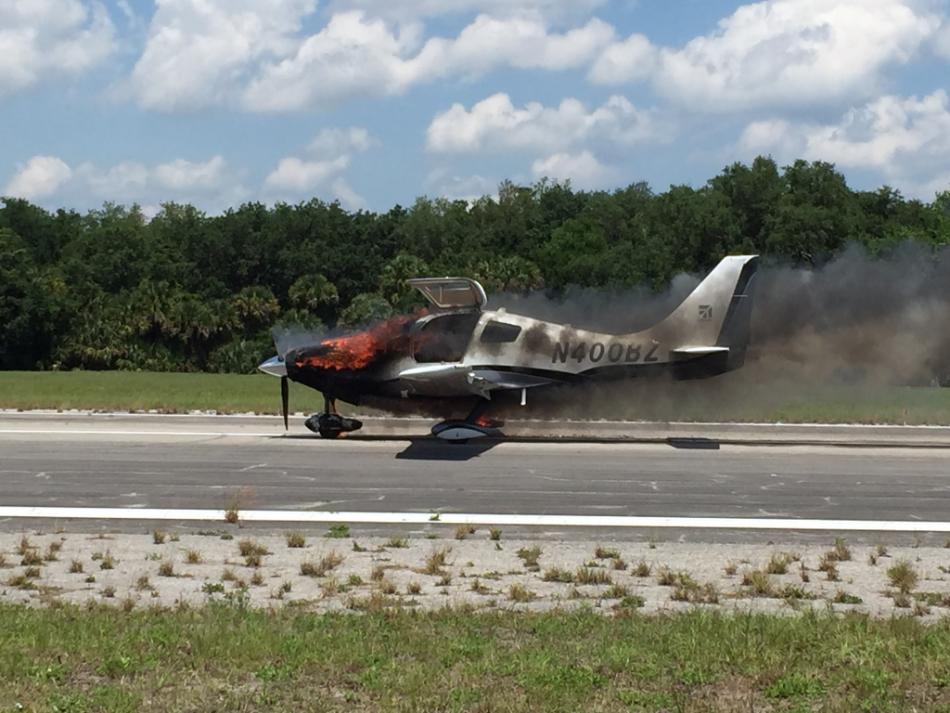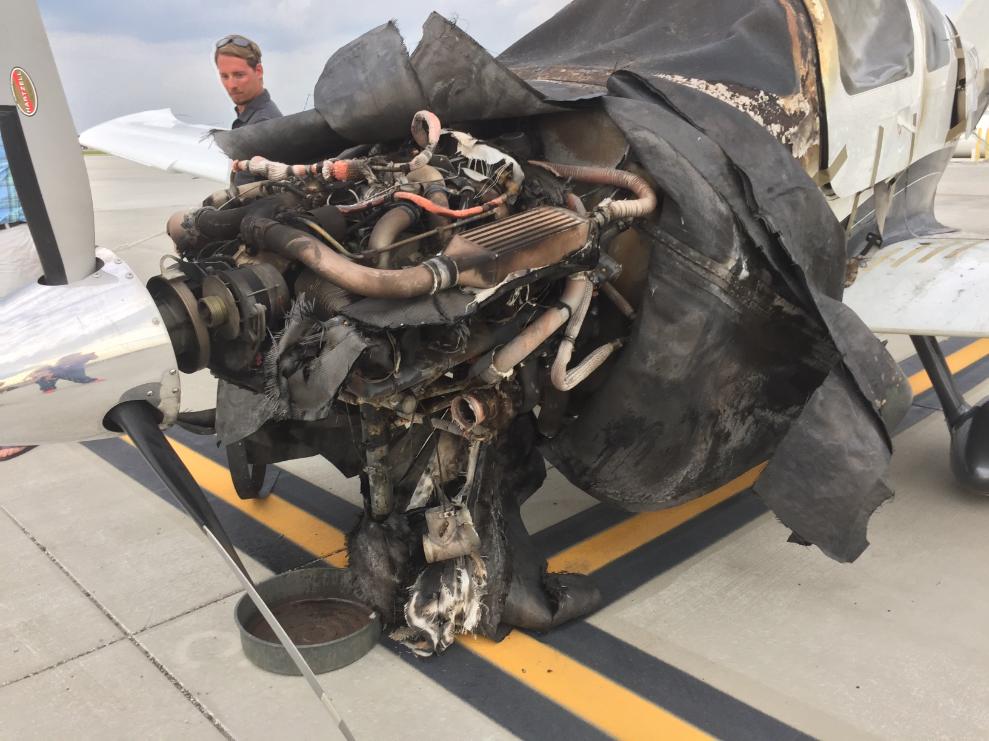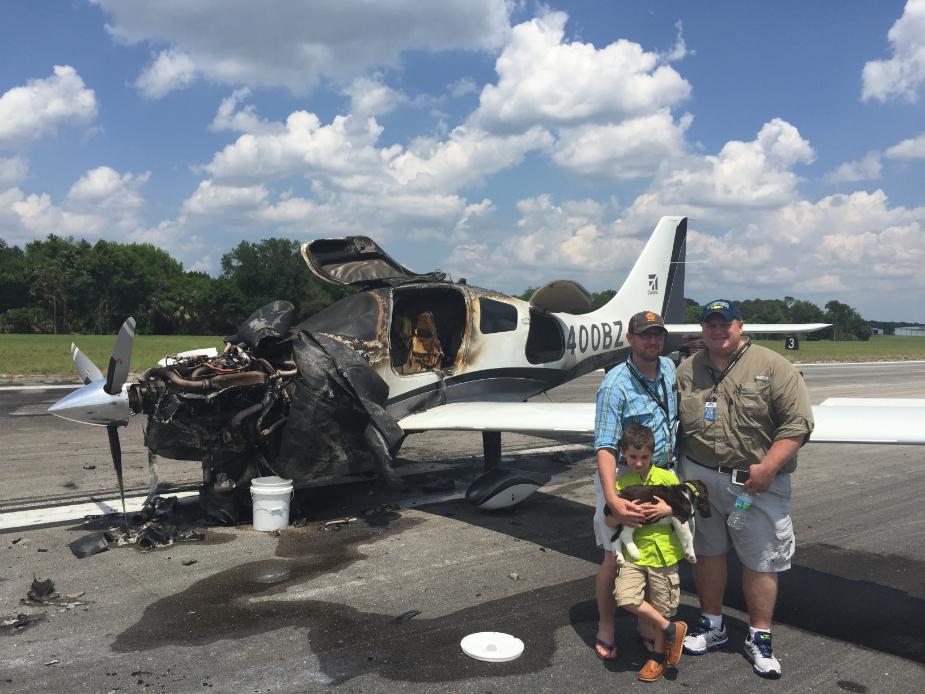It was one of those severe clear Florida mornings that make you grateful to be a pilot. I was in my 2008 Columbia 400, cruising VFR at 12,000 feet from KSAV to KORL—smooth air, family aboard, dog asleep at my son’s feet, and a friend riding right seat. Everything looked perfect.
Then the oil temperature indicator fluctuated.
Nothing dramatic, just enough to notice. I asked for lower. A minute later, the oil pressure gauge did a nose dive.
That’s when the mind switches from relaxed pilot to practiced aviator. Years of training, dozens of emergency simulations—all of it came back in one focused breath. I asked for lower again.
Smoke poured into the cockpit.
Squawk 7700
“Mayday, mayday, mayday.”

The controller’s voice came back calm and precise. You couldn’t tell he was green—a new controller on duty. He cleared the airspace, offered vectors, and coordinated with surrounding airports with total composure.
At 12,000 feet, I shut the vents to block the smoke and scanned for pavement. The Shuttle Landing Facility stretched below, but I knew it was closed. I pointed my spinner toward Runway 27 at Titusville. My right-seat friend called the visual cues as laser focused on the numbers.
The descent from twelve thousand to touchdown took less than three minutes—an emergency descent that ended with a smooth arrival on the numbers. Then came the scramble. Four souls—including one very confused dog—made a hare-scramble exit from the airplane.
When we turned back, the Columbia that had just saved us was burning.
The sirens grew louder, but no help came through the fence. Later we learned why: Titusville had just completed a million-dollar renovation of its fire station—but hadn’t budgeted enough to staff it on weekends.
The irony stung as we watched the sleek carbon-fiber fuselage collapse into a coiled, blackened heap of composite and aluminum.

What the Investigation Found
The NTSB report would later confirm what the wreckage already hinted. Post-accident examination revealed severe thermal damage to the engine compartment and fuselage. The No. 3 cylinder exhaust valve rocker-box cover was missing, the No. 4 exhaust cover was missing multiple screws, and the No. 2 cover was loose. Oil journals were dry and discolored from heat.
In short, the engine had run itself out of oil.
A small aluminum cover—roughly the size of a drink coaster—had come loose in flight, allowing the entire oil supply to blow out. In a few minutes, lubrication went to zero, friction skyrocketed, and the TSIO-550-C suffered a catastrophic internal seizure. Connecting rods separated from their journals, the camshaft fractured between cylinders five and six, and puncture holes appeared in both crankcase halves.
Engine data from the Garmin G1000 showed exactly how it unfolded. At 12:49:30, oil pressure began a steady decline. Three minutes later it hit zero PSI at about 8,000 feet. Exhaust-gas temps rose, then fell to 400°F as the powerplant quit producing power. The propeller windmilled, then stopped.
From there, it was all glide, judgment, and a deadstick.
The NTSB ultimately listed the probable cause as:
“An inflight fire and total loss of engine power due to oil starvation, following separation of the No. 3 cylinder exhaust-valve rocker-box cover for undetermined reasons.”
Aftermath and Reflection
I’d owned that airplane for only fifty hours. Watching it burn from the edge of the ramp, I was overwhelmingly grateful that my wife wouldn’t be meeting an insurance adjuster with a different policy in hand.
When the shock wore off, the lesson settled in.
I’ll never know whether keeping the cowling off after that last maintenance would have saved me from this. Maybe, maybe not. But I do know that leaving it open until I’ve inspected it myself is a good habit—one that helps catch the simple, obvious oversights before they cost an engine, or worse.
It also sends a quiet message: you expect your mechanic to use checklists, torque specs, and procedural discipline every single time.
A New Habit
These days, every airplane I fly gets the same routine:
✅ Ask the shop to leave the cowling off until I’ve looked inside.
✅ Verify torque seals, safety wire, and gasket alignment.
✅ Confirm paperwork and service entries.
✅ Ask questions until I’m satisfied.
It’s not mistrust—it’s partnership. Mechanics are human, pilots are human, and aviation only stays safe when both sides check each other’s work.
The Unsung Heroes
There’s another part of this story—one about professionalism under pressure.
That controller, the one whose voice guided me down through smoke and silence, got noticed. The National Air Traffic Controllers Association (NATCA) reviewed the tapes and recognized his cool precision that day. They invited my wife and me to Las Vegas for their annual convention.
Standing on stage before thousands of off-duty controllers from around the country, I presented him with an award for outstanding performance. We replayed the audio for the audience—the calm cadence of ATC, the clipped calls from a cockpit running out of oil—and everyone in that hall understood exactly what professionalism sounds like.
So next time you’re on frequency, thank your controller. They’re the invisible link in every flight, often working long hours and, lately, without pay through budget deadlocks just ahead of the holiday rush. One day, they might be the reason your story ends like mine—with gratitude instead of tragedy.

Trust, but Verify
Flying depends on trust: in machines, in people, and in the discipline that connects them. But trust works best when it’s verified.
So keep the cowling off until you’ve looked under it yourself.
Run your fingers along the fasteners. Ask to see the torque marks. Watch the process.
Because in aviation, one missing screw can change everything—and a few extra minutes on the ground can give you a lifetime’s worth of stories to tell.
